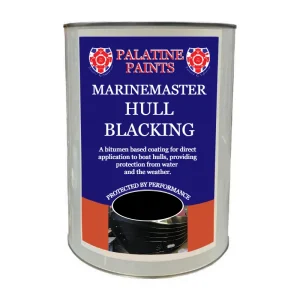Priming and Protecting
Understanding Hull Blacking: The Key to Enhanced Boat Performance
What is hull blacking?
Hull blacking is essentially a protective measure, applying a coating to the hull of a boat to protect it from water and the organisms that inhabit it. While the name might suggest the use of black paint, the reality is that a variety of materials can be used for this purpose. Traditionally, black bitumen-based paints were used for hull blacking. They provided an effective barrier against water but had the disadvantage of being relatively short-lived. This meant that boats needed to be re-blacked frequently to maintain the protective layer. In recent years, there has been a shift towards modern materials that offer greater longevity and protection. These include epoxy resins and high-performance paints, which can provide years of protection with a single application. Regardless of the specific materials used, the primary goal of hull blacking is to protect the boat from water damage and improve its performance.Why is hull blacking important for boat performance?
You may be wondering why hull blacking is so critical for boat performance. The answer lies in the nature of water and the organisms that live in it. Water can be incredibly destructive, especially to materials like wood and metal, which are commonly used in boat construction. Without a protective layer, the hull of a boat is at the mercy of the water. It can suffer from erosion, corrosion, and the growth of aquatic organisms, all of which can negatively impact the boat’s performance. A boat with a damaged or dirty hull will be slower, less maneuverable, and consume more fuel than one with a clean, well-protected hull. Furthermore, the growth of aquatic organisms on the hull, a phenomenon known as bio-fouling, can significantly reduce a boat’s speed and fuel efficiency. By providing a protective barrier, hull blacking helps prevent bio-fouling, ensuring your boat performs at its best.The process of boat hull blacking
The process of hull blacking is relatively straightforward, but it does require some preparation and the right materials. It typically involves the following steps: First, the boat needs to be removed from the water and thoroughly cleaned. This usually involves pressure washing the hull to remove any dirt, algae, or other aquatic organisms. Once clean, the hull should be inspected for any signs of damage or wear, which should be repaired before proceeding with the blacking. Next, the hull is prepared for blacking. This can involve sanding the surface to create a rough texture, which helps the blacking material adhere better. Once the hull is prepared, the blacking material is applied. This can be done using brushes, rollers, or sprayers, depending on the specific material and the size of the boat. Finally, once the blacking material has been applied, it needs to be left to dry and cure. This can take anywhere from a few hours to several days, depending on the specific material and the environmental conditions. Once cured, the boat can be returned to the water, with its hull now protected and ready to deliver optimal performance.Different types of hull blacking
There are several different types of hull blacking available, each with its advantages and drawbacks. The most common types include:- Bitumen-based blacking: This is the traditional type of hull blacking, using black bitumen-based paint. It’s relatively cheap and easy to apply, but it doesn’t last as long as some other types.
- Epoxy blacking: This type of blacking uses epoxy resins to create a durable, waterproof coating. It’s more expensive than bitumen-based blacking, but it provides a longer-lasting protection.
- Copper-based blacking: This type of blacking uses copper particles suspended in a paint or resin. It provides excellent protection against aquatic organisms and can last for many years.
- High-performance paint: These are specially formulated paints that provide a high level of protection and can last for several years. They’re typically more expensive than other types of blacking, but they offer the best performance.
Tips for maintaining blacked hulls
Once your boat’s hull has been blacked, it’s important to maintain it properly to ensure it continues to provide the best possible protection. Here are a few tips for maintaining a blacked hull:- Regular inspections: Regularly inspect your boat’s hull for any signs of damage or wear. If you notice any areas where the blacking is thin or missing, it’s important to reapply it as soon as possible.
- Regular cleaning: Keep your boat’s hull clean to prevent the growth of aquatic organisms. This can be done using a soft brush and environmentally friendly cleaning products.
- Avoid harsh chemicals: Avoid using harsh chemicals on your boat’s hull, as these can damage the blacking and reduce its effectiveness.
- Regular re-blacking: Even with the best maintenance, all types of hull blacking will eventually wear out and need to be reapplied. How often this needs to be done will depend on the specific type of blacking and the conditions your boat is used in.



